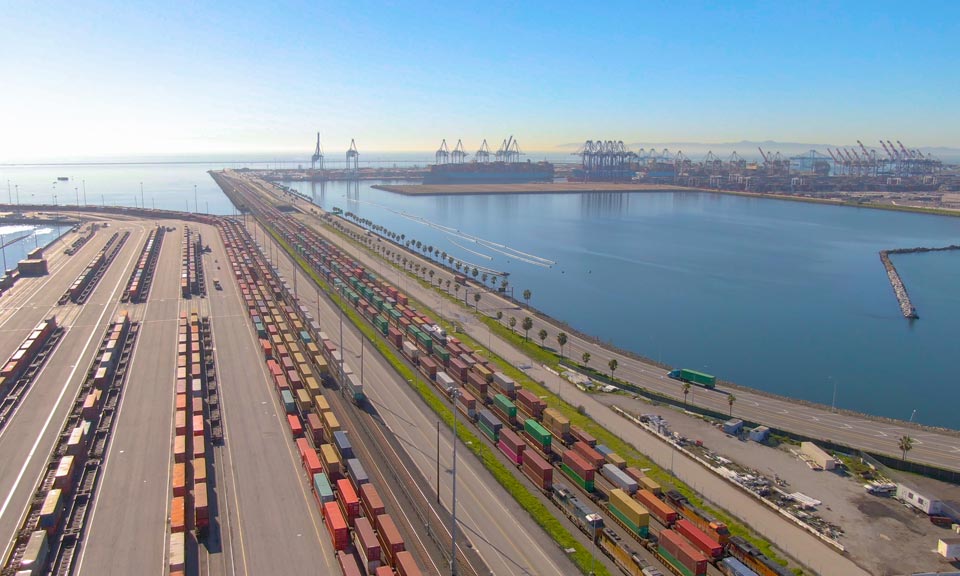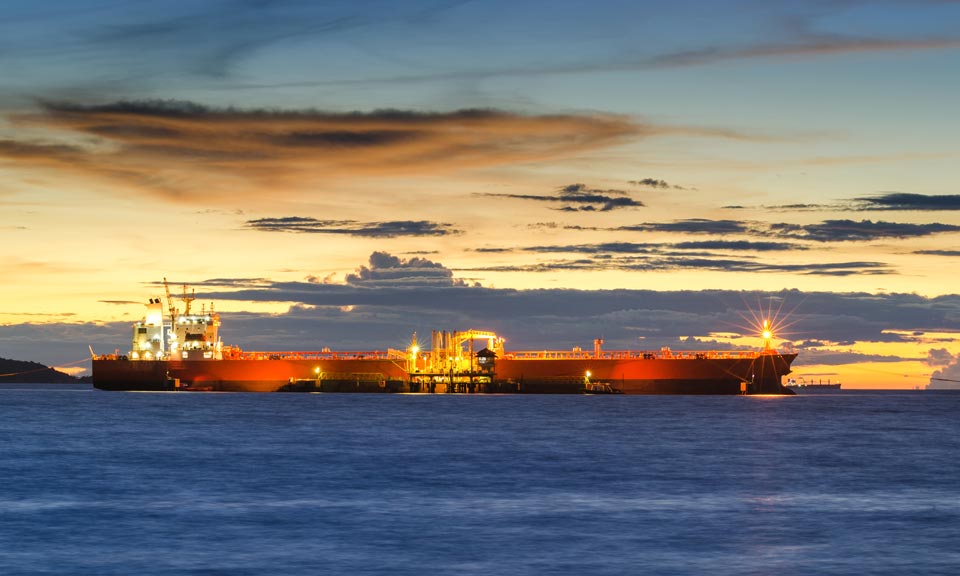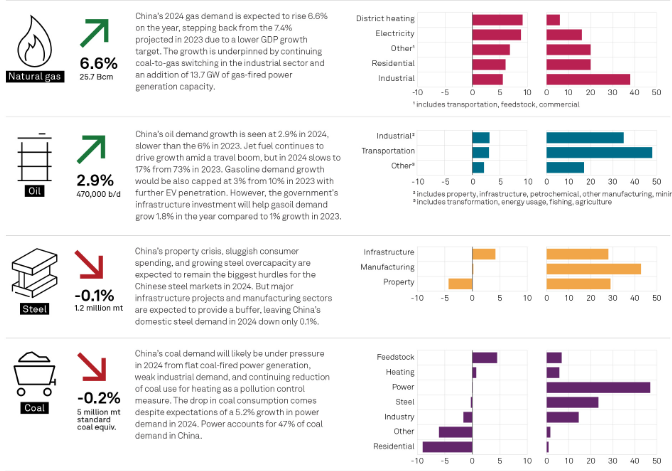Commodities 2023: Ample supply likely to weigh on Asian HSFO market

The Asian high sulfur fuel oil market is likely to be bogged down for most part of 2023 by ample Russian supply, despite expectations of steady to strong demand, especially from the downstream marine fuels sector, several traders and analysts said.
Russian-origin supply is likely to increasingly find its way east following a ban on the country's oil product exports in 2023. That could tilt the demand-supply balance more toward a market that's likely to be long than balanced, even with expectations of steady HSFO demand from the utility sector and even more so from scrubber-fitted vessels.
"It looks like it's going to continue ... Russian barrels coming into Asia [and] weighing on the [HSFO] fundamentals," said a Singapore-based fuel oil trader with a Western company. "No big changes on the demand side, just a lot more supply."
It may not, however, necessarily be all doom and gloom for the Asia HSFO market as there are factors that could come into play to support demand, traders said.
Expectations that China's economy is likely to stage a rebound, even if gradual, would mean rising demand -- and output -- for middle and light distillate products. That may result in incremental demand for HSFO as a coker feedstock to produce relatively better margin products, traders said.
Beijing has issued 18.99 million mt of export quotas for clean oil products in its first batch for 2023, S&P Global Commodity Insights reported Jan. 3, citing several sources with knowledge of the matter.
The clean product quotas for exporting gasoline, gasoil, and jet fuel are 46% higher from 13 million mt issued in the same batch for 2022.
Increased freight activity due to an economic upswing could also support bunker demand, traders said.
Although high sulfur bunker fuel is estimated to account for only around 10% or so of China's total bunker demand, most of China's HSFO demand is met through imports, most of it, from Singapore.
Another factor that may support the Asia HSFO market is the slim likelihood that Russian refiners may cut run rates after the European Union's ban on Russian oil product imports Feb. 5, said traders.
"If Russia [refiners] reduces run rates, then it might be bullish for the [HSFO] market going forward. If not, it might mean more coming in and the East market having to absorb more [Russian] barrels," said another Singapore-based fuel oil trader.
Most market participants, however, said the trade flows that have emerged following Russia's war on Ukraine are likely here to stay, if not consolidate, by way of higher volumes getting shipped through the respective routes.
"I don't think [the EU ban] would change the oil flow. Russia is selling much more to Singapore, than they are to Europe anyway, so what's the point of reducing run rate," said a Singapore-based fuel oil trader at a major shipping company.
"[Russia] still has plenty of outlets ... it's just a little bit more difficult in terms of logistics, but not impossible, as demand for [relatively cheap] Russian fuel oil is still there. They still need the money," said a fuel oil trader at a South Korean refiner, suggesting that it was unlikely that Russian refiners would cut run rates.
Russian HSFO fuel oil exports to Asia stood around 1.4 million mt in December 2022, up slightly from 1.3 million mt in November 2022, Kpler data showed.
High sulfur bunker demand is expected to be buoyant in 2023, extending a similar trend from 2022, traders said.
Market optimism broadly stems from expectations that demand will see a further uptick from more scrubber-fitted vessels coming into operations in the near- to medium-term.
"The delta between LSFO [low sulfur fuel oil] and HSFO has widened, allowing for a faster return on investment," a Singapore-based commercial manager at a shipping company said.
The spread between the benchmark Singapore marine fuel 0.5%S cargo and the Singapore 380 CST HSFO cargo assessment averaged $261.09/mt in 2022, up from $119.69/mt in 2021, S&P Global data showed.
Singapore's high sulfur bunker fuel sales rose 29.7% year on year to 12.42 million mt over January-November 2022, accounting for 28.4% of its total sales across all bunker grades, up from 25.8% in 2021, latest data from the Maritime and Ports authority of Singapore showed.

News
Russia, one of the world’s largest oil suppliers, has increasingly turned to non-Western firms to transport its crude to overseas buyers during its ongoing war with Ukraine . With a dual goal of undermining Russia’s war chest without creating significant disruptions to global supplies amid inflation pressure, G7 countries and their allies have banned tanker operators, insurers and other services firms from facilitating seaborne Russian crude exports unless the barrels are sold for no more than $60/b. The price cap regime, which came into force Dec. 5, 2022, does not directly cover tankers flagged, owned and operated by companies outside the G7, the EU, Australia, Switzerland and Norway, and not insured by Western protection and indemnity clubs. While such ships tend to be older and less maintained, their share in Russia’s crude exports market has been rising in recent months amid strengthening prices of Urals -- the OPEC+ member’s flagship crude grade -- and tightening sanctions enforcement by the West. Non-price-capped tankers have a larger market share in shipping Russia’s Pacific crude exports, according to analysis of S&P Global Commodities at Sea and Maritime Intelligence Risk Suite data. Crudes such as Sokol, Sakhalin Blend, and Eastern Siberia–Pacific Ocean grades are more often involved in these trades than Russian barrels from Baltic or Black Sea ports like Urals. Tanker operators in Greece, Europe’s top shipowning nation, managed to keep their traditionally strong market position in Russia in the first few months since the price cap took effect before giving ways to their peers in the UAE, Russia, China and Hong Kong. (Latest update: April 5, 2024)

News
Red Sea shipping volumes have slumped more than 60% since November as vessels opt for the longer Cape route to avoid Houthi attacks. But even as the severity of the attacks mounts, freight rates have retreated from recent highs and oil-on-water may have peaked as trade flows adjust. Click to see the full-size infographic

News
A series of attacks on shipping routes in the Red Sea has so far spared oil supplies from witnessing major disruptions, but oil importing countries are spending sleepless nights amid concerns that any escalation could potentially alter the situation drastically. Although the attacks disrupted container shipping lines, oil shipments remain largely stable. However, concerns stem from the fact that supply chains will likely have to adjust very quickly should the disruption persist. As existing oil tanker contracts are often hard to change, some ongoing traffic will continue to move through Red Sea passages. Any new insurance issued for Red Sea routes could add about $1/b or more to voyage costs, according to S&P Global Commodity Insights. Re-routing will increase voyage length, in-transit times and fuel costs. In addition, it will result in higher vessel utilizations, which could lift global freight rates as well as widen inter-regional crude spreads. Surely, more ships are avoiding the Red Sea and Bab al-Mandab strait after a spate of attacks by Yemen's Houthi militants, threatening the strategic chokepoint for global seaborne trade. Many shippers, tanker owners and some oil companies have suspended voyages through the area. Russia's oil exports are particularly exposed to further Red Sea disruptions as Moscow ships some 80% of its crude to Asian markets. The attacks are expected to keep insurance costs high and prompt many tankers to take the longer route via the Cape of Good Hope, increasing ton miles and voyage durations, as well as tightening supplies and driving up freight rates. Even for the route via the Suez Canal, higher fees effective this year combined with a carbon tax for Europe-bound cargoes, will increase overall costs for charterers. Special report: Taking the long way around: Ships divert from the Panama Canal Although the rerouting of tankers away from the Red Sea, a major conduit for oil loaded in Russia, will surely raise shipping costs, the impact will be transitory. Roughly 7 million-8 million b/d of crude oil and products transited the Red Sea in recent months, according to S&P Global data. The market, for sure, will adjust to the changing flows, but the re-routing will lead to more oil on the water for a longer period of time. Russian crude shipments, should they avoid the Red Sea, are most affected due to a much longer haul to Asia around Africa. And amid tighter fleet capacity, lingering geopolitical conflicts are expected to boost tanker freight in 2024 despite ongoing OPEC+ supply cuts and a possible slowdown in oil demand growth. Implications for Asia As the biggest oil importing region, Asia may not witness dramatic changes to near-term oil supplies amid the ongoing Red Sea crisis, but refiners are chalking out alternative plans to ensure steady feedstock flows in the event of an escalation, a move that could inflate insurance costs and crimp refining margins. Although the region relies on imported oil for the bulk of its needs, the strategic push among Asia's top importers to massively diversify their import baskets over the years, as well as expand strategic storage, will come in handy to ensure smooth and uninterrupted flow of feedstocks. The Red Sea crisis has three aspects to it, as far as Asian oil flows are concerned. First, any escalation will create hurdles for Russian crude flowing to Asia, forcing buyers to look for substitutes from other origins. Secondly, for products moving from Asia to Europe, exporters are cautiously watching developments before taking the plunge. And lastly, longer routes have the potential to create incremental bunker fuel demand in Asia. Oil flows into China have not been impacted much by the Red Sea turbulence, as fewer cargoes are headed there on that route. In addition, the impact on Russian oil flows to India has been minimal, with no major diversions seen so far. Russia contributed over 35% of India's total crude imports in 2023, amounting to 1.7 million b/d, according to S&P Global data. Asian oil buyers are not necessarily concerned about Middle Eastern sour crude supplies for 2024, as major sellers, including Saudi Aramco and Abu Dhabi National Oil Co., fully respect Asian customers' demand regardless of their production cut commitments. However, the economics for cracking Middle Eastern sour crude have been deteriorating as the costs of bringing Persian Gulf barrels to the Far East have been rising with shippers demanding risk premiums, while tanker insurance costs are also trending higher. Asian refiners may even look at cutting Middle Eastern term contractual volumes and explore other options like African, US and South American crudes to maximize margins. US crudes, for one, is becoming increasingly more attractive for Asian refiners as the price of lighter and sweeter WTI crude is nearly on par with high-sulfur Persian Gulf grades on a delivered basis. Supply cushion The attacks in the Red Sea continued even after the US-led alliance took military action to establish deterrence. The risk of a wider escalation also increased with Pakistan's retaliatory strikes against Iran for alleged Iranian militant attacks in Pakistan. Overall, the geopolitical tensions in the Middle East have only increased over the weeks. However, oil markets have largely shrugged aside the risk due to a lack of physical disruption to oil shipments and weak macro fundamentals. But increased risk in the Middle East is probably putting a floor to oil prices amid weak demand. S&P Global expects fundamentals to improve in the second half of 2024 and prices to move up. Still, OPEC+ market management and the alignment between Saudi Arabia and Russia on OPEC+ policy will be critical for oil markets in 2024. S&P Global forecasts Platts Dated Brent to average $83/b in 2024 and $76/b in 2025. A sharper economic slowdown or disagreement within OPEC+ on production restrain remains the biggest risk for oil markets going into 2024. By: Sambit Mohanty, Editorial Lead, Asia Energy News, S&P Global Commodity Insights, S & P Global Commodity Insights Further reading: Red Sea shipping risk

News
China on Jan. 17 released its 2023 GDP growth at 5.2%, meeting its target set in March last year. S&P Global projects China’s 2024 GDP growth to slow to 4.7% after the country's annual economic conference held in December implied that any fiscal and monetary measures taken in 2024 were unlikely to be more aggressive than in 2023. This sets a weak tone for commodity markets in terms of end-user demand. Click here to see the full size version